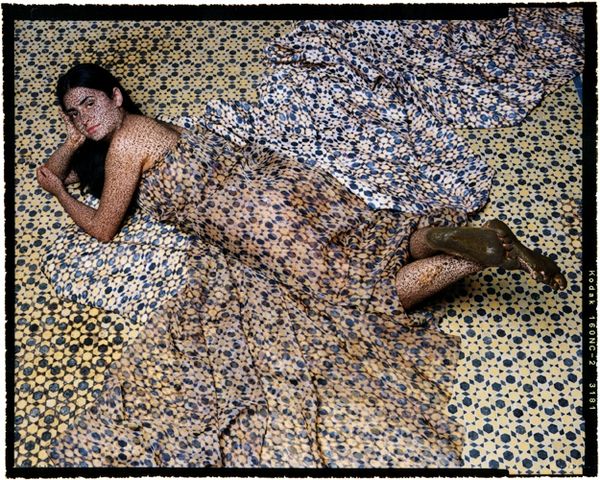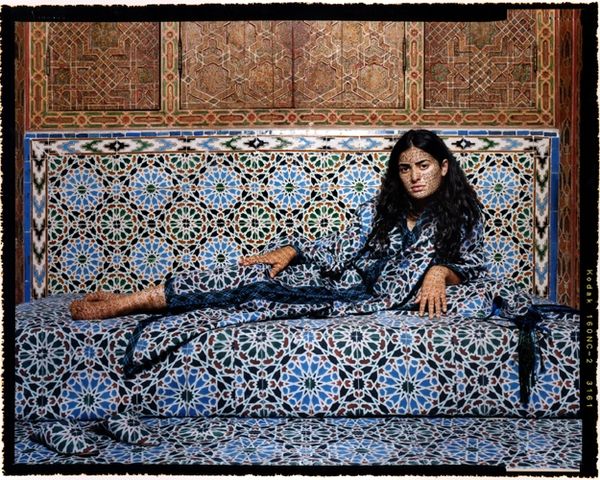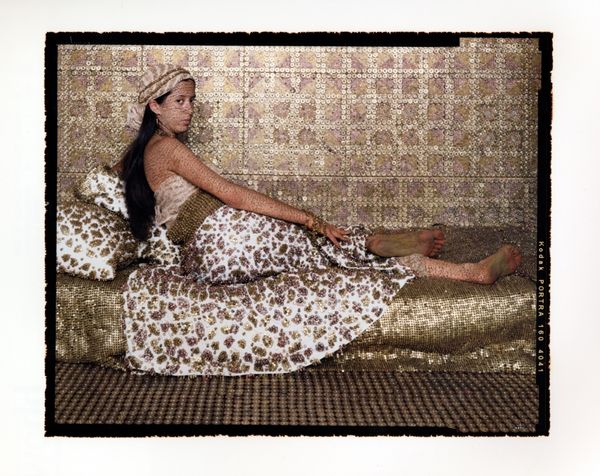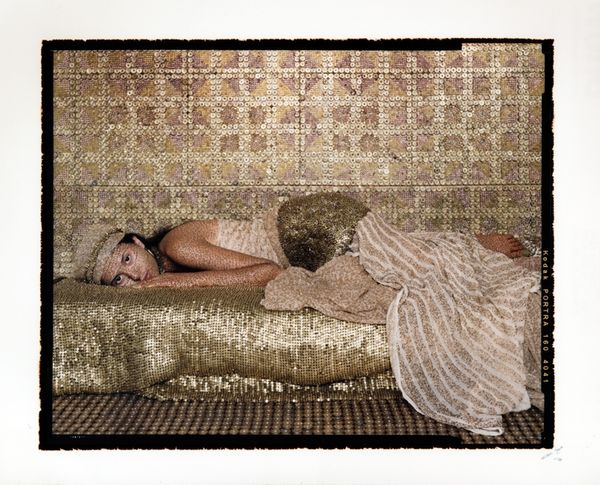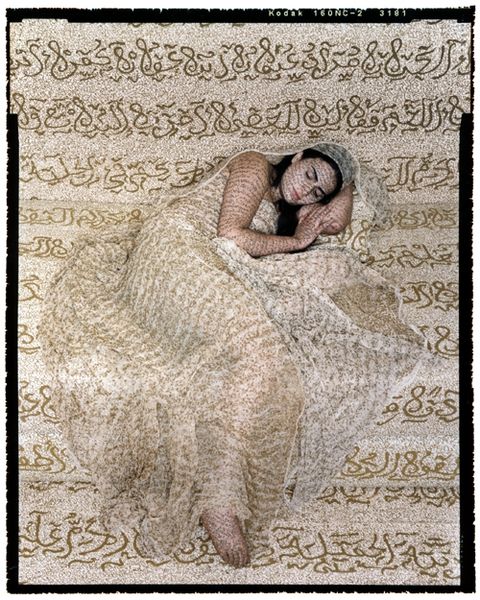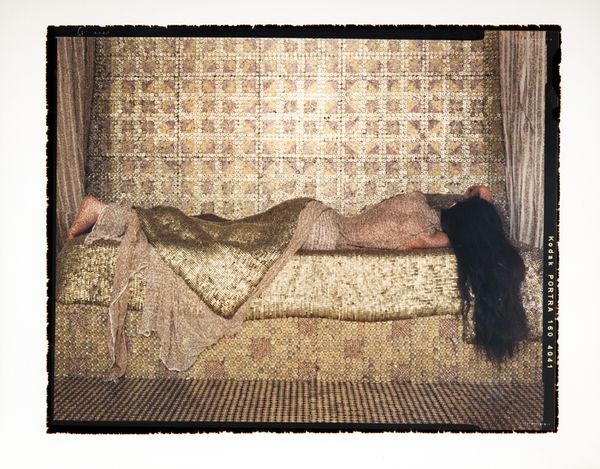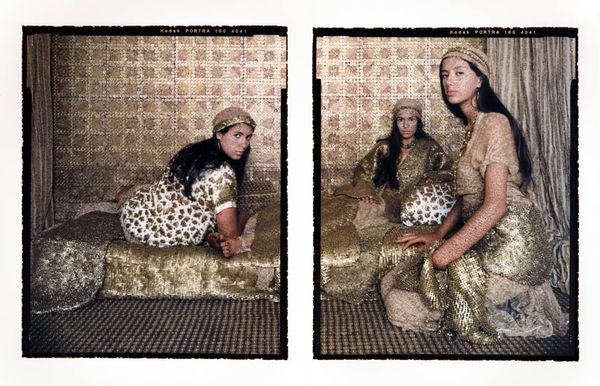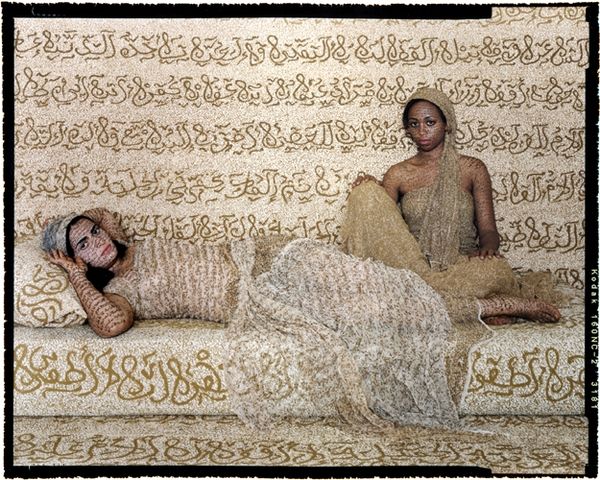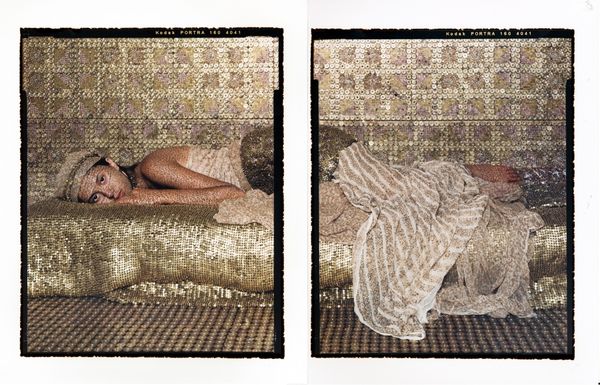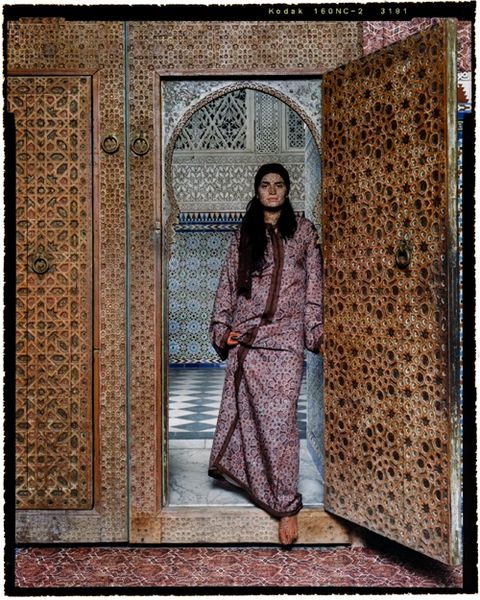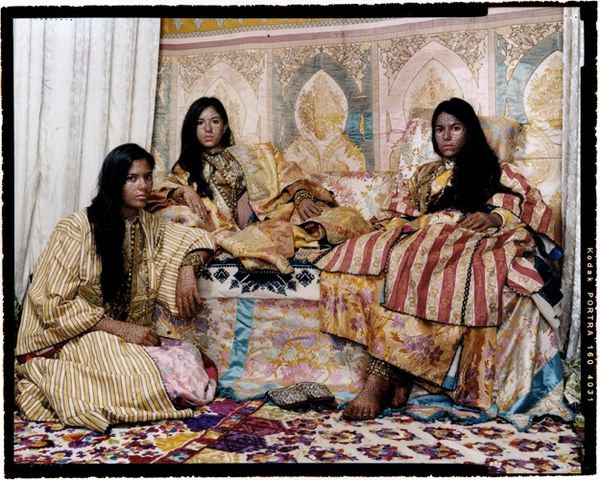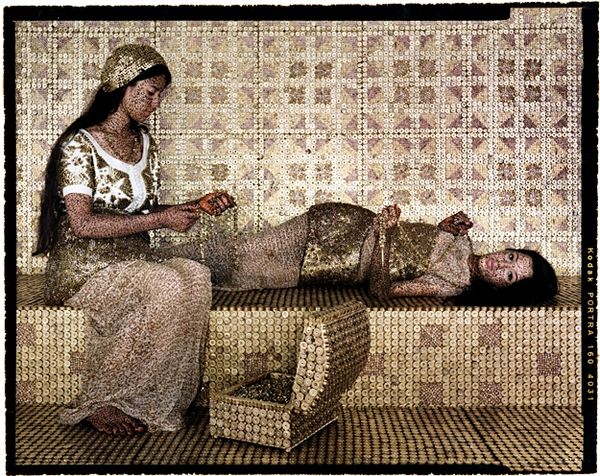
photography
#
portrait
#
collage layering style
#
animal print
#
fashion and textile design
#
fashion editorial
#
geometric pattern
#
photography
#
culture event photography
#
ethnic pattern
#
geometric
#
person communication photography
#
orientalism
#
asian style outfit
#
multicultural outfit
Copyright: Lalla Essaydi,Fair Use
Curator: Lalla Essaydi's "Harem #10," made in 2009, is before us—and right away, it feels less like a photograph and more like a meticulously crafted dream. The way the woman is lying, so still…almost entombed, isn’t she? Editor: My first thought went straight to textiles! The sheer abundance of patterns – geometric tiling underfoot, and the woman’s ornate robe… it’s all about the interplay of these constructed materials. Curator: Constructed indeed. The photograph is almost claustrophobic with pattern. It dances on her skin, a script, almost, or a veil…What is she writing on herself, and what’s being written upon her? Essaydi often uses henna, traditionally applied to women's skin before marriage. Editor: Exactly! That shifts the focus to henna’s application. It's not just surface decoration; it’s about adornment *as* a practice, the physical labor and the culturally loaded rituals, repeated motifs like labor itself…And think of the layers of mediation; from pattern maker to garment maker to the model as artist's material. Curator: And then Essaydi’s camera! I can’t help but see this through the lens of Orientalism, that exoticised Western fantasy. Yet Essaydi subverts this expectation, right? She’s a Moroccan woman reclaiming, deconstructing…or even haunting that space. Editor: The means are fascinating to me: consider photography as an inherently *reproducing* medium. What’s produced – image, narrative – is always the product of someone's labor and for what aim? Whose "harem" are we really seeing? The model isn’t passive. Curator: The figure becomes both subject and object, literally inscribed. But do you feel the weight of stillness? The silence is almost a scream against the patterns. Or perhaps an act of resistance, of internal defiance. Editor: Perhaps both? My mind keeps returning to how it was actually made. How much textile went into the garment. The labor hours multiplied in preparation. It takes collective work to construct "stillness." Curator: Ultimately, I see Essaydi holding up a mirror – not just to a culture, but to the Western gaze itself. A reminder that we are always looking through layers…layers of expectation, fantasy, and yes, materials. Editor: Agreed. And those layers – the fabric, the patterns, the very photograph itself – remind us that everything is constructed, from the image to the idea of a "harem" itself.
Comments
No comments
Be the first to comment and join the conversation on the ultimate creative platform.
